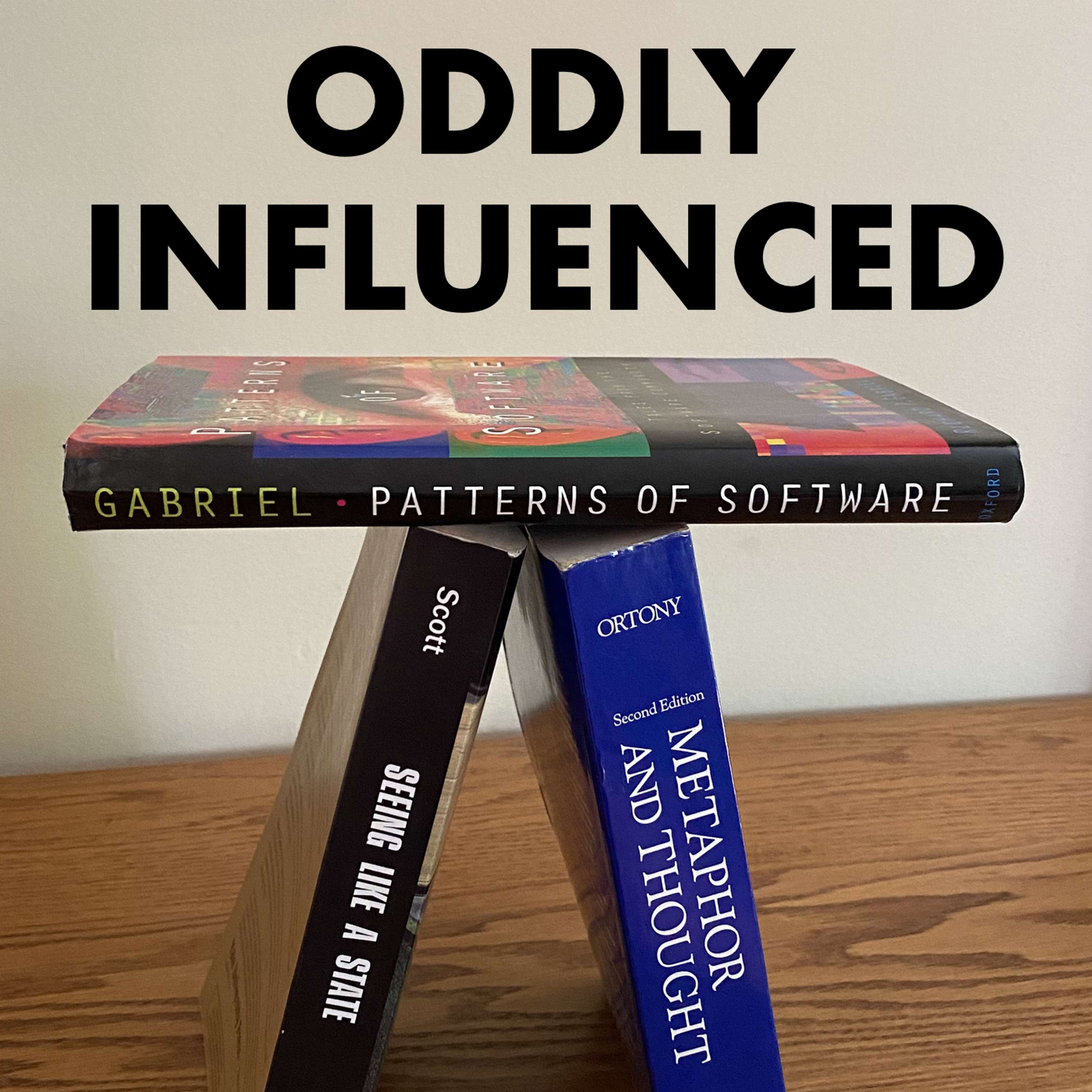

Oddly Influenced
Brian Marick
A podcast about how people have applied ideas from outside software to software.
Episodes
Mentioned books

Aug 29, 2022 • 35min
Interview: Downsides of packages, upsides of jUnit (with Elisabeth Hendrickson and Chris McMahon) ("Packages", Part 4)
GuestsElisabeth Hendrickson, @testobsessed, Curious Duck Digital LaboratoryChris McMahon, @chris_mcmahon, blogCitationsCrafting Science: A Sociohistory of the Quest for the Genetics of Cancer, Joan Fujimura, 1997. Explore It!: Reduce Risk and Increase Confidence with Exploratory Testing, Elisabeth Hendrickson, 2012.

Aug 22, 2022 • 23min
Theories of What? or: Richard Rorty Weighs in on TDD ("Packages", Part 3)
CitationsCrafting Science: A Sociohistory of the Quest for the Genetics of Cancer, Joan Fujimura, 1997. Contingency, Irony, and Solidarity, Richard Rorty, 1989. Smalltalk Best Practice Patterns, Kent Beck, 1996.Ward Cunningham on "working the program", 2004.The Mathematical Experience, Phillip J. Davis and Reuben Hersh, 1980."Elephant Talk", King Crimson, 1981 (audio)."Hammock-Driven Development", Rich Hickey, 2010 (video)."What is Hammock-Driven Development?", Keagan Stokoe, 2021CreditsImage of contrasting words from Flickr user andeecollard, Creative Commons License CC BY-SA 2.0

Aug 15, 2022 • 22min
jUnit and What Makes a Successful Tool ("Packages", Part 2)
Recombinant DNA ("gene splicing") was a wildly successful technology in the world of cell biology. Its success gave credibility to the associated "proto-oncogene theory of cancer." The theory piggy-backed on the tool. jUnit was a fairly successful tool in the world of Java programmers. But it was not as successful as recombinant DNA, and it was fairly unsuccessful at promoting its associated theory of test-driven design.This episode looks at what (according to Joan Fujimura's ideas about the history of molecular biology) is required for a tool to be successful, and why jUnit's theory didn't successfully piggyback on the tool. Sources mentionedCrafting Science: A Sociohistory of the Quest for the Genetics of Cancer, Joan Fujimura, 1997. Molecular Cloning, a Laboratory Manual (Fourth Edition), Michael R. Green and Joseph Sambrook, 2012.“Test Infected: Programmers Love Writing Tests”, Kent Beck and Eric Gamma."JUnit: A Cook's Tour", Kent Beck and Eric Gamma.Junit Recipes: Practical Methods for Programmer Testing, J. B. Rainsberger, 2003.XUnit Test Patterns: Refactoring Test Code, Gerard Meszaros, 2007.My question about the adoption of TDD

Aug 8, 2022 • 20min
E2: Viruses, Cancer, TDD, and "Packages": Part 1
When TDD arrived on the software scene around 1980, it became popular very fast. Why did it succeed so well?I think it's because it was a combined theory and technology that hit the same "sweet spot" of intellectual infectiousness that the "proto-oncogene theory of cancer" did in the 1980's. Most of this episode is a history of the proto-oncogene theory. The next episode will look at case studies in software.Sources:Crafting Science: A Sociohistory of the Quest for the Genetics of Cancer, Joan Fujimura, 1997. "Crafting science: Standardized packages, boundary objects, and 'Translation.'", Joan Fujimura, in Science as Practice and Culture, Andrew Pickering (ed.), 1992.The Craft of Software Testing, Brian Marick, 1994. (Don't buy this book unless you need it for the unauthorized biography of me that you're writing. It's terribly out of date.)CreditsI mention a comment from Twitter user James Thomas (@qahiccupps)The DNA artwork is by Zephyris - Own work, CC BY-SA 3.0.Thanks to Dawn Marick for checking the draft script.

Jul 19, 2022 • 21min
E1: Boundary Objects
This podcast explores the concept of boundary objects and how they facilitate collaboration between different social groups. It delves into the founding of a research museum studying evolutionary change and highlights the role of boundary objects in coordinating attention and understanding. Additionally, it discusses the use of acceptance tests in software development as boundary objects for effective coordination and communication.


